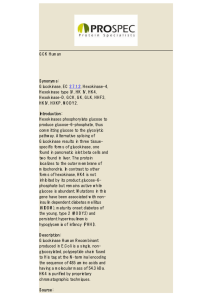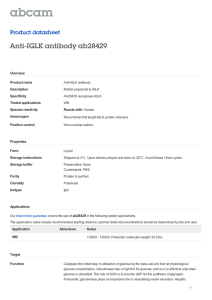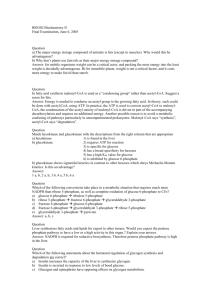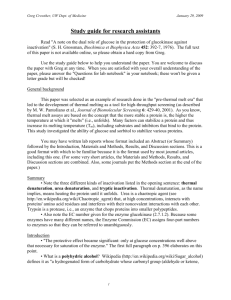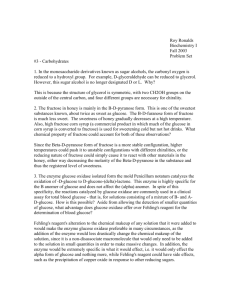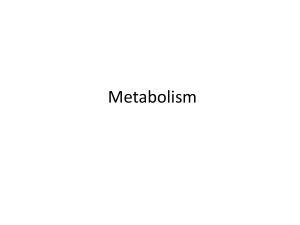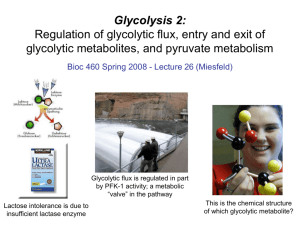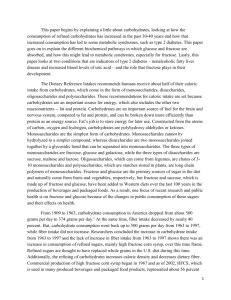Regulation of Glucokinase in Isolated Hepatocytes
advertisement
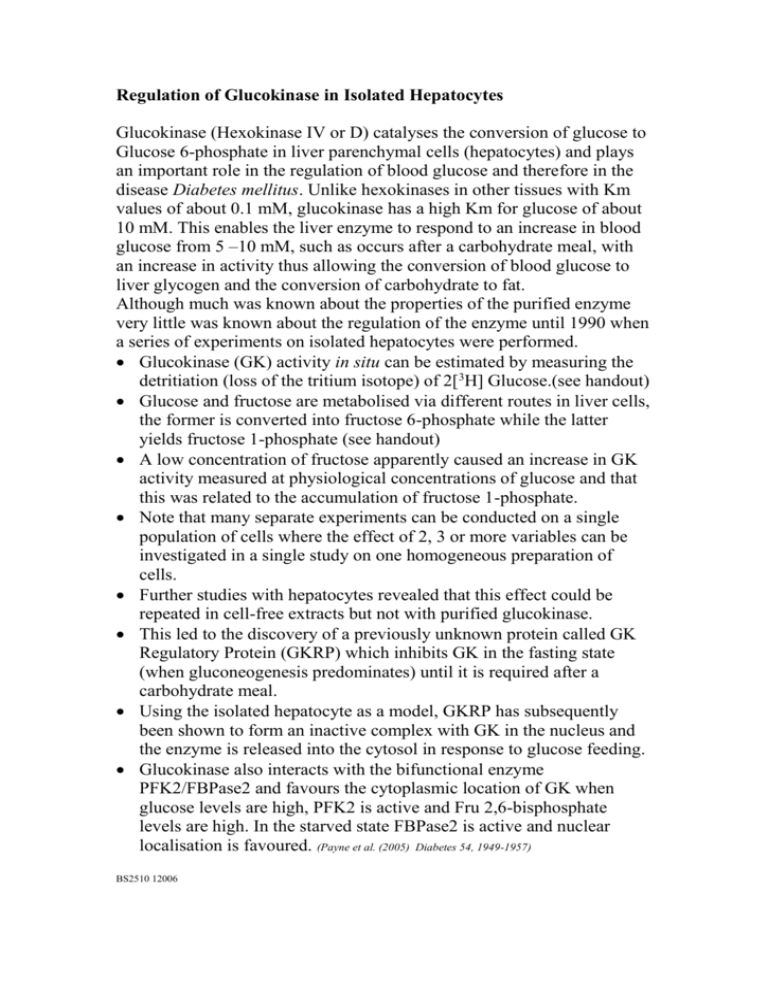
Regulation of Glucokinase in Isolated Hepatocytes Glucokinase (Hexokinase IV or D) catalyses the conversion of glucose to Glucose 6-phosphate in liver parenchymal cells (hepatocytes) and plays an important role in the regulation of blood glucose and therefore in the disease Diabetes mellitus. Unlike hexokinases in other tissues with Km values of about 0.1 mM, glucokinase has a high Km for glucose of about 10 mM. This enables the liver enzyme to respond to an increase in blood glucose from 5 –10 mM, such as occurs after a carbohydrate meal, with an increase in activity thus allowing the conversion of blood glucose to liver glycogen and the conversion of carbohydrate to fat. Although much was known about the properties of the purified enzyme very little was known about the regulation of the enzyme until 1990 when a series of experiments on isolated hepatocytes were performed. Glucokinase (GK) activity in situ can be estimated by measuring the detritiation (loss of the tritium isotope) of 2[3H] Glucose.(see handout) Glucose and fructose are metabolised via different routes in liver cells, the former is converted into fructose 6-phosphate while the latter yields fructose 1-phosphate (see handout) A low concentration of fructose apparently caused an increase in GK activity measured at physiological concentrations of glucose and that this was related to the accumulation of fructose 1-phosphate. Note that many separate experiments can be conducted on a single population of cells where the effect of 2, 3 or more variables can be investigated in a single study on one homogeneous preparation of cells. Further studies with hepatocytes revealed that this effect could be repeated in cell-free extracts but not with purified glucokinase. This led to the discovery of a previously unknown protein called GK Regulatory Protein (GKRP) which inhibits GK in the fasting state (when gluconeogenesis predominates) until it is required after a carbohydrate meal. Using the isolated hepatocyte as a model, GKRP has subsequently been shown to form an inactive complex with GK in the nucleus and the enzyme is released into the cytosol in response to glucose feeding. Glucokinase also interacts with the bifunctional enzyme PFK2/FBPase2 and favours the cytoplasmic location of GK when glucose levels are high, PFK2 is active and Fru 2,6-bisphosphate levels are high. In the starved state FBPase2 is active and nuclear localisation is favoured. (Payne et al. (2005) Diabetes 54, 1949-1957) BS2510 12006
